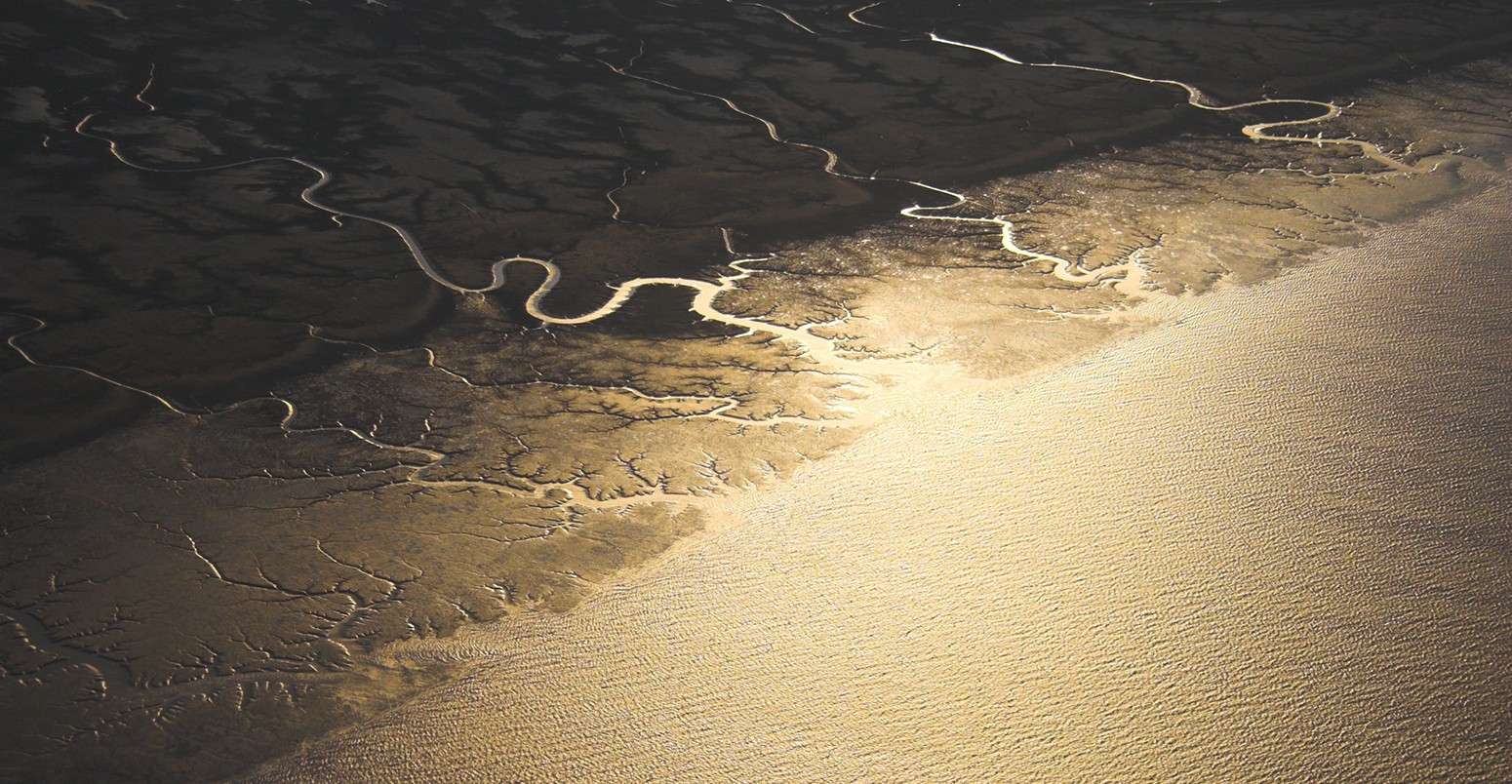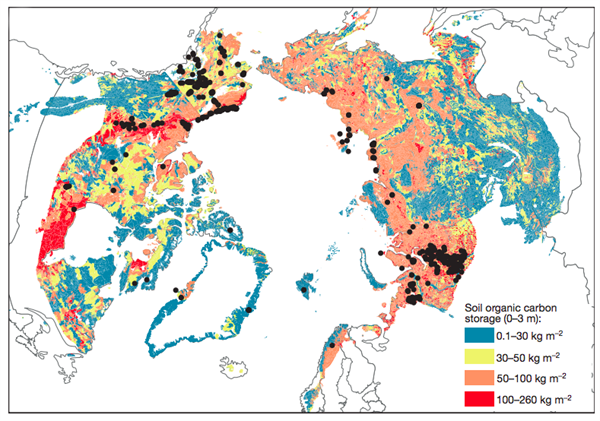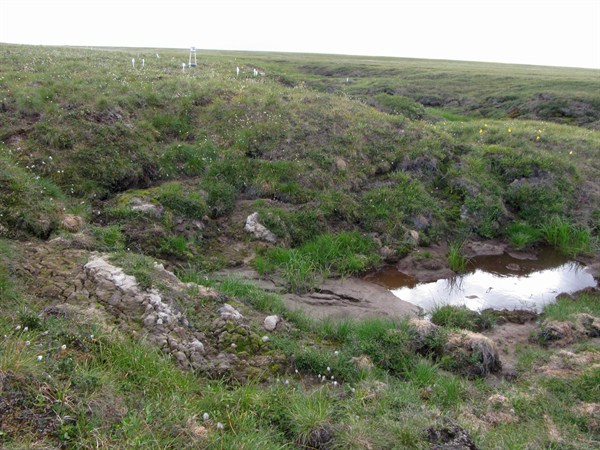
Guest post: What the latest science says about thawing permafrost
Dr Christina Schädel
04.13.15Dr Christina Schädel
13.04.2015 | 10:30amA guest post from Dr Christina Schaedel, a research associate at the Ecosystem Dynamics Research Lab at Northern Arizona University.
Huge amounts of organic carbon are stored in frozen soils across the Arctic. Scientists are concerned that warming temperatures will thaw permafrost, releasing carbon into the atmosphere. But questions still remain over how much carbon these soils hold, and how quickly it could be released.
In our new study, published last week in Nature, we reviewed all the latest research to see what thawing permafrost could mean for climate change. We find that it is likely to be a gradual, long-lasting release of greenhouse gases over many decades rather than an abrupt pulse.
Frozen soils
In the Arctic, temperatures are so cold that soils stay frozen all year round, giving permafrost its name. These frozen soils cover about one quarter of the landmass in the northern hemisphere.
The soil holds a vast amount of carbon, accumulated from dead plants and animals over thousands of years. There is around twice as much carbon in permafrost than is currently in the Earth’s atmosphere.
But global temperatures are now rising and these frozen soils are starting to thaw. Temperatures in the high latitudes of the northern hemisphere have risen by 0.6C per decade over the last 30 years. As the soils thaw, the microbes they contain are woken from their ice-induced hibernation. The microbes feed on the organic carbon, converting it into carbon dioxide and methane, which is released into the atmosphere.
Vicious cycle
Scientists are concerned that permafrost thaw and the subsequent release of carbon will fuel a positive feedback loop, which will accelerate climate change. Warmer conditions cause the release of carbon dioxide and methane from permafrost, which means more warming, which in turn causes more permafrost to thaw and so on.
Calling this cycle a ‘positive’ feedback might be misleading. It’s more of a vicious cycle.
Our review looks at the research that has been conducted and published since the last assessment report from the Intergovernmental Panel on Climate Change (IPCC). Our team of scientists from across Europe and North America combined data and model outputs to address three main questions: how much permafrost carbon exists, how fast will that carbon be released to the atmosphere, and will it be released as carbon dioxide or methane?
Carbon store
We gathered together estimates of carbon stored in permafrost from the most recent studies. The map below, for example, shows estimates from one study of the amount of organic carbon held in the top three metres of permafrost soils. The reds and orange areas show the areas that contain the most carbon, which you can see across much of Siberia and Canada.
Map of organic carbon contained in the top three metres of permafrost in northern hemisphere. Points show locations of field testing for up to 3m depth of soil (field tests for up to 1m are too numerous to show). Source: Higelius et al. ( 2014)
New field studies of soil carbon are a regular feature of this area of science. The land area to cover is huge and calculating how much carbon is held in deeper soils is tricky. In fact, it’s only recently that scientists have been able to sample some of the deep permafrost, and they’ve found that a substantial fraction is susceptible to future thaw.
Our evaluation of all this research suggests there is between 1330 and 1580 billion tons of carbon stored in permafrost in the northern hemisphere.
This doesn’t include the carbon held in permafrost in some Arctic seabeds, which scientists still aren’t able to quantify very accurately. The soils in these seabeds are similar to those in Alaska and Siberia, but were submerged as sea levels rose after the last ice age.
Most of this carbon store we calculated is still frozen – but how long will it stay that way? Knowing the amount of carbon stored in permafrost is the first step to a reliable estimate of how much carbon could be emitted.
Gradual and prolonged process
We reviewed the published findings from the most up-to-date earth system models. Our study suggests that around 90 billion tons of carbon could be released by 2100 under a high emissions scenario. This would equate to 5-15% of the total permafrost carbon store.
At these rates, the release of the permafrost carbon pool are unlikely to occur at a speed that could cause abrupt climate change over a period of a few years to a decade. Instead, our review suggests emissions will be a gradual and prolonged process over many decades and centuries. But though this may temper the worst fears of a greenhouse gas ” time bomb“, the release will still make the climate warm more quickly than we would expect from human activity alone.
Because of momentum in the climate system and continued warming and thawing of permafrost, emissions are expected to affect the climate for many centuries to come. We estimate that 59% of total emissions from permafrost will occur after this century.
These emissions translate into an additional climate warming of 0.13-0.27C by 2100, and up to 0.42C by 2300.
Exactly how much of the thawed carbon will be released to the atmosphere will also depend on how fast the climate warms, which is primarily driven by the ongoing release of greenhouse gases from human activities.
Carbon dioxide or methane
Our study also assessed whether carbon is likely to be released as carbon dioxide or methane. This is important because methane is a more potent greenhouse gas than carbon dioxide.
In dry soils, microbes produce carbon dioxide as they feed on the organic carbon. But when permafrost thaws, some of the soil becomes waterlogged as the underlying frozen soil stops the meltwater from draining. In saturated soil, the lack of oxygen means the microbes release methane as well as carbon dioxide.
So you might think that waterlogged soils would make for a larger climate feedback. Our review looked at laboratory experiments from different scientific studies. These show that the lack of oxygen in the wet soil actually slows down how quickly the microbes process the organic carbon. This means that more carbon is released from dry soils, even though it isn’t released as methane.
We’re still working on calculating the exact ratio of how much carbon is released as methane and carbon dioxide in wet soils.
Warming of ice-rich permafrost causes the ground to subside while exposing large quantities of organic matter. Credit: C. Schäde.
If we want to estimate mitigation efforts to keep the global temperatures under 2C, we need to consider as many of the sources of greenhouse gases as possible. Climate models used for IPCC assessments do not yet include the effects of carbon dioxide and methane release from thawing permafrost.
The release of carbon from permafrost will only get stronger as the Arctic continues to warm. The insights from our review will hopefully help the modelling community to refine their models, so that the fate of permafrost carbon in a warmer world can be included.
Main image: Aerial view of tundra near Arctic Ocean.
Schuur, E.A.G. et al. (2015) Climate change and the permafrost carbon feedback, Nature, doi:10.1038/nature14338



